On a bend in Lee High Road going towards Lewisham from Lee Green an attractive late Victorian pub dominates. Currently badged the Dirty South, it has been empty since March 2020, seemingly a victim of COVID-19. It has some lovely architectural detail (including the original brass clock) and a fascinating history, most of it when called the Rose of Lee.
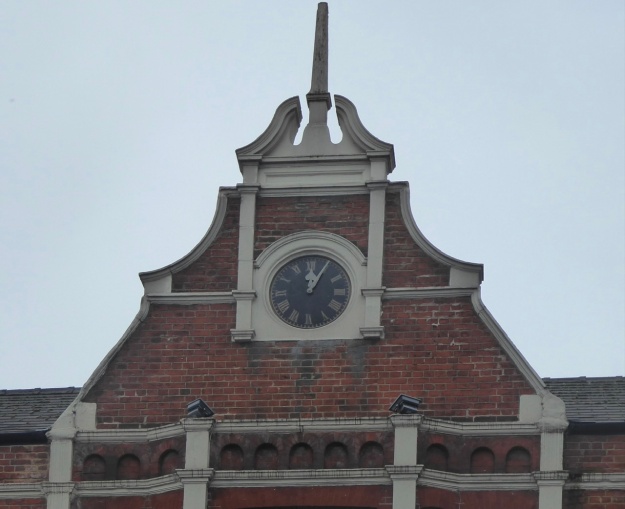
It is a pub that seems to have first opened its doors in 1859 with a licence granted to William Baker (1). The area around had started to be developed in earnest from the 1850s after the opening of Lewisham station in 1849, although there was earlier ribbon development along Lee High Road. The area that is now the Mercator Estate was developed in the 1850s and a Baptist chapel opened on the corner of Eastdown Park in 1854, along with Christ Church in Lee Park the same year. With the spiritual needs being met it is not surprising that there would be an attempt to meet the drinking requirements of the relatively wealthy locals.
The early years seemed to be a struggle for licencees and Henry Taunton took over in 1861 (2). By the autumn of the following year, possibly before, John Maywood Lee was there and had applied unsuccessfully for a music and dancing licence (3). The same application was repeated a year latter with a sympathetic local press noting a ‘strong case’ and no opposition, but the magistrate was unsympathetic (4).
Lee moved on by July 1864 with the 25 year old William Hart Wildee taking on the licence (5). He had previously had the licence of The Victory in Kingsland Road from 1861, which he seems to have inherited from his father (6).
Wildee seems to have wanted to make better use of the large space that the Rose of Lee offered – attempting to generate more regular income from the function room above. It was described in the press as a “ventilated room 75’ by 26’ ft (24 x 9 m) suitable for ‘first rate club or society.’” Its availability for excursion parties and bean feasts was noted too (7).
The magistrates seemed to take up the offer (8); in an era where few public buildings courts were often held in hotels and larger public houses, as we saw with the Green Man on Blackheath in relation to the Blackheath Pedestrian. The Rose of Lee was also regularly used for auctions – such as one for a range of building materials in June 1868 (9).
William Wildee attempted unsuccessfully to sell the lease in 1866 – the Rose of Lee was described as ‘a modern structure and replete with every convenience for carrying out a profitable trade’ (10). The implication seeming to be that while there was potential, money wasn’t being made.
Wildee’s tenure didn’t last much longer as it was cut short by his death in early 1867 at the Rose of Lee. His assets which included the lease passed to his wife, Harriet. While she took over the licence she sold up to George Taylor in the autumn of 1867 (11) – he was to be 6th name above the door in 8 years.
George Taylor’s tenure ended with eviction, although this seems to have been something of a formality as he was reported to have abandoned the pub and fled the country – perhaps with large debts and wanting to avoid the debtors’ prison. The Rose of Lee was left empty for a ‘considerable period’ before a new licensee arrived – the licence was granted to either someone called John Steib (12) or by John Scott, an experienced publican who had run two pubs before for a total of 10 years (13), depending on the newspaper.
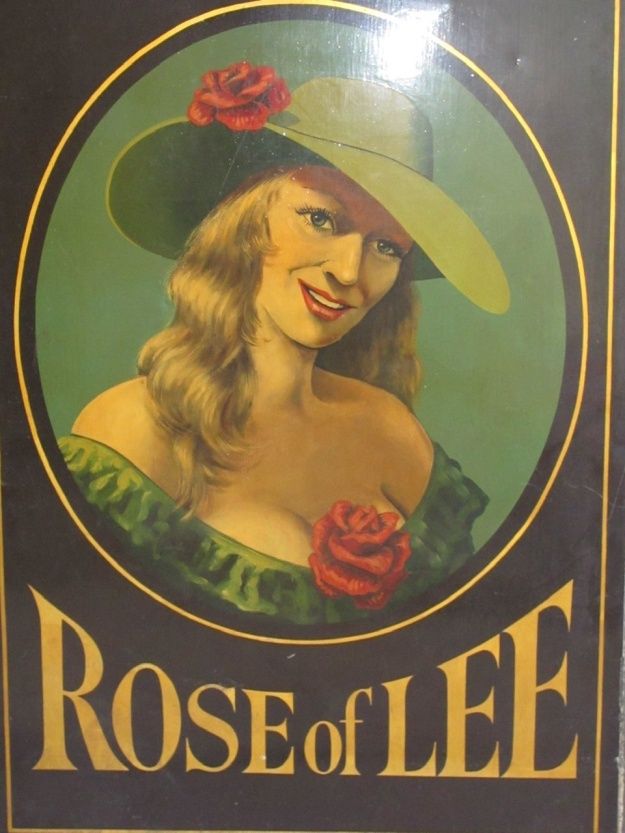
John Steib was certainly a licensee there as he was replaced by James Philip Janes in 1872 (14). Janes would have been 21 when he took over the tenancy, he too struggled and by 1873 James Martin’s name was on the brass plate over the door (15). By early 1874 William Edgington was granted the licence after pub had been ‘closed’ by the late tenant, presumably Martin (16). Edgington’s tenure was even shorter, Walter Pool was the new landlord by September 1874 (17).
The Rose of Lee was becoming a graveyard for publicans some who had success elsewhere – James Janes did so elsewhere in Woolwich and New Cross and by the 1881 census he was living on Lewisham High Street and described as a ‘Retired Licensed Victualler’ and employing three servants.
Pool seemed to make a little more of go lasting until around 1879 before Edward Slater took over the licence (18). Slater, from Wednesbury in the Black Country, was there when the 1881 census enumerators called, along with two nieces and a barman. The licensee and owner (19) by 1886 was Frank Wilson though.
While music and dancing licences had been rejected in the 1860s, they had certainly been granted by the 1885. One of the relatively regular users of rooms there were Lewisham Hare and Hounds, a forerunner of Kent AC. The club had a handicapped race from their Hither Green Hall base (listed as Patches Lane, which seems to have been part of Hither Green Lane) with ‘smoking concert’ at the Rose of Lee afterwards (20). It was used by other sports clubs for similar purposes, including Blackheath and Lee Cricket Club (21).
Frank Wilson had taken over both the licence and the ownership of the Rose of Lee probably from around 1883 when one of his children was born in Lee. The family had spent time in Aden (now Yemen) before that. In the 1891 census Frank was there with his wife, Alice, six children and a barmaid – Ada Sidery. Ada was a local woman and was one of at least 12 children of the builder William Sidery and had grown up 100 metres down Lee High Road (next door to the Baptist Chapel, later site of Fry’s and Penfolds parts and servicing).
Frank Wilson sold up to Thomas Henry Cook in 1896 (22); Cook seems to have been behind the rebuilding of the Rose of Lee. Several prominent local pubs had been rebuilt in the late 1880s and 1890s – notably The Sultan, close to Lewisham, The Woodman further up Lee High Road, along with the Old and New Tigers Head pubs at Lee Green. Plans were submitted to the Parish surveyor in 1897 (23). However, it wasn’t until 1900 when plans were approved by local magistrates (24).
No photographs seem to exist of the original Rose of Lee, but the changes are obvious from the ‘footprint’ of the pub from 1863 (left) and 1914 (right) Ordnance Survey maps.
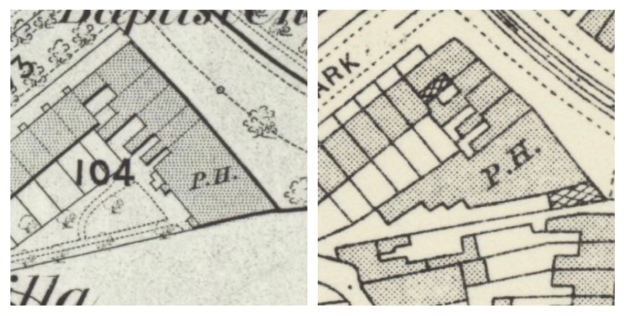
The changes seem to have enabled the pub to have a billiards club which saw regular exhibition matches, the were appearances from some of the well-known professional players of the day. In 1906 this included Bert Elphick (25) who was to become the Billiards Professionals’ Association Champion a few years later and Walter Lovejoy (26) who had recently turned professional after winning the amateur championship in 1904.
Other clubs and societies met there too – Lee Rovers Cycle Club (27) had already moved there from the alcohol free Jubilee Coffee Tavern near Lee Green. With the Lee Excelsior Musical Society (28) meeting there as well. The pub was home too to several Masonic Lodges, including the Lee Lodge of Instruction which had links to another lodge at Eltham Palace (29).
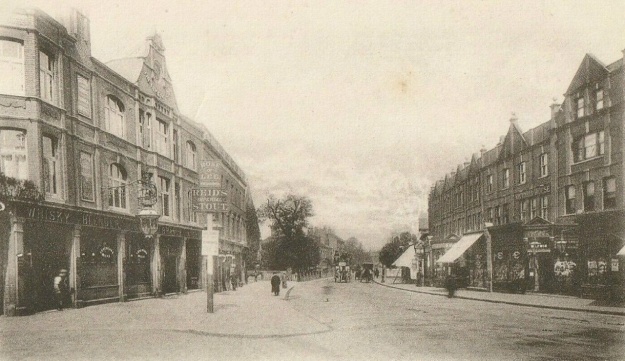
Cook was born in 1861 in the City and in the 1901 census was listed as being at the Rose of Lee living with his wife, Maud, four children, some extended family, two servants and four bar staff. Unless Thomas Cook was living way beyond his means, it seemed that the pub was a thriving business and had moved way beyond the trials and tribulations of his predecessors.
Cook was fined in 1903 for selling alcohol to a drunk, despite evidence to the contrary but the magistrates believed the police (30).
Cook must have moved on soon after as the 1905 Kelly’s Directory listed a Hugh William Shannon as being the landlord. Although Adrian Bailey had taken over by the end of 1905 (31) and like Cook, received a fine for selling alcohol to a drunk the following year (32).
Bailey there until December 1909 – the date was mentioned in case where his wife, Emily, was seeking divorce, citing cruelty. These were allegations that he denied, and the petition was dismissed (33). By the end of the war they were divorced though, Emily had moved in with a former regular at the Rose of Lee and Bailey, then an army Lieutenant, hired a private detective to get the evidence (34).
Thomas Robinson there in 1911 and is listed in the census with his wife, Edith, two young children, two servants, three bar staff and a boarder. The Robinsons had moved on by 1916 and Kelly’s listed George Poole as the man pulling pints.
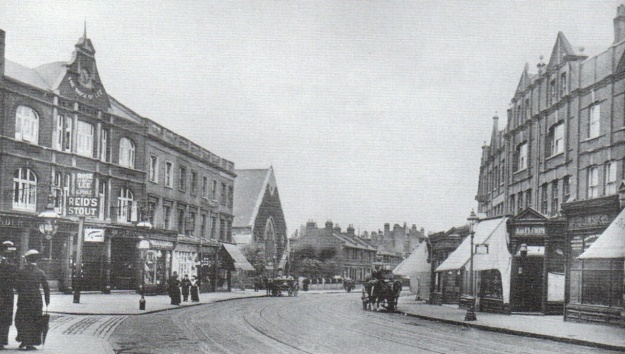
George Poole and was to have his name in brass over the door until around the end of World War 2. Other than his 1939 Register entry, anything more of George’s life has proved difficult to track down – he was listed there as being born in 1872 and in 1939 was living there with his wife, Frances, a couple of bar staff and a cook.
By the 1945 Kelly’s Directory, the pub was listed as being run by Norriss Brothers, Caterers – who are listed until the early 1950s, after which the Directory doesn’t name who was there.
The pub was run by Alice and Len Dwan in the late 60s early 70s. Len had been born in Bermondsey in 1928. He was living in Mayflower Street in Rotherhithe in 1939, and seems to have been late being xx. He married Alice (née Britton) in Bermondsey in 1952, it seemed to be her second marriage. She Alice was born in Bermondsey in 1929 and was living in Surrey Quays in 1939.
Alice used to cook large joints of meat for bar food sandwiches. She died, relatively young, in Southwark in 1990 with Len moving to Orpington where he passed away in 2014.
By the 1970s it was at least in part a music venue with bands playing regularly, its greatest claim to fame from this era was the first gig of Kate Bush in March 1977. The set list included a lot of covers including ‘Come Together’, ‘I Heard It Through The Grapevine’, ‘Tracks Of My Tears’, but some of her own songs including ‘James And The Cold Gun’, ‘Saxophone Song’ and ‘Them Heavy People’ which all appeared on her debut album.

There were lots of fond memories of the pub in the 1970s and 1980s from a Facebook thread – the upstairs room used for wedding receptions, a landlord called Austin Daly from the early 1980s who continued the tradition of live music, soul and R&B nights on Sundays, and, of course, the odd lock in – although how on earth that would have been hidden with the frontage, goodness knows….
The next landlord seems to have been Ron Miles around 1983, under the ownership of the Host Group (part of Grand Metropolitan). The music continued, a gym was set up in a room upstairs, and there were plans for a night club. However, Host in the end changed the Rose of Lee into a Sports Bar, Ron helped set this up before moving on around 1985.
It later became Hobgoblin. It never seemed terribly inviting, a bar dominated by TV screens with a sparse number of drinkers looking out through the large windows. The landlords from the 1980s and beyond included Vickie & Steven Hill, Tony Coffey and Colin Taylor who ran the pub between 2001 and 2004 (there are several comments from Colin below, some of which has been included in the post).
From around 2004, the Rose of Lee re-invented itself as a rock and indie music venue, agai, badged as the Dirty South. It was a venue which attracted a younger audience, it always seemed busy around the weekend with DJ sets, which included the likes of Tim Burgess from the Charlatans and Terry Hall of the Specials.
There were lots of live acts too – this included some significant names from the era as two snapshots in time from Google StreetView in 2008 and 2009 note – posters outside included gigs for Bloc Party, Bombay Bicycle Club, the Levellers, The Yards (a band that evolved from The Seahorses), Domino Bones (a band that featured Bez from the Happy Mondays) and Babyshambles, filmed below – warning the music is loud and of not great sound quality. Alabama 3 also played there in 2010.
From around this time the upper floors started to be used for temporary housing hostel of various types – known as Rose House.
The pub was ransacked during the summer riots of 2011; while there main damage was to the windows at the front, it was enough to see the pub remained shut for around 5 years, with a full re-launch in 2017. It was a different clientele and age group it was aiming at – no longer primarily a music venue rather it seemed to have modelled itself on the same demographic as the seemingly successful Station Hotel on Staplehurst Road.
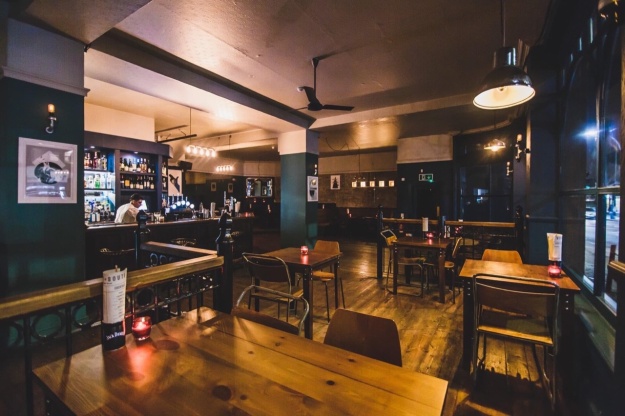
They offered a variety of fayre with an emphasis on food but music continued with jazz evenings and DJ sets, along with quiz nights and football on the TV. The shutters went up at the beginning of the first COVID-19 lockdown and never seemed to come off. Its website is no more, and the Facebook page has been silent since 7 March 2020.
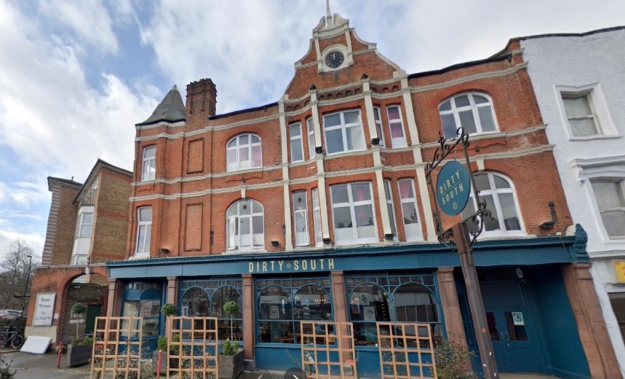
At the time of writing in early 2021, the building is squatted and with metal grilles over the windows at the front It is a forlorn looking sight – it is owned by Wellington, a company controlled by the ultra-rich Reuben Brothers, its future, like much of the pub sector, appears very uncertain in the current environment. A little protection was added in late 2021 when it was granted Asset of Community Value by the Council. This means that if it ever went on the market a group of local people could get together to put in a bid for it, and go on to open and run the venue for the benefit of the community.
If you worked there or drank there, tell your story, who were the characters who propped up the bar, the landlord, the staff, the atmosphere, the memorable nights, the particular celebrations that were held there, memories of the friends, the beers. Post them below (you can use your Facebook or Twitter login – or via Facebook (if you found the post via here) – if it is you first comment ‘here’, you will have to wait for ti to be ‘moderated’. I will update the post with comments. Anything libellous will get deleted here & no doubt on the Facebook Group pages.
Notes
- The Era 2 October 1859
- The Era 17 February 1861
- Kentish Mercury 04 October 1862
- Kentish Mercury 24 October 1863
- Morning Advertiser 11 July 1864
- Morning Advertiser 13 March 1861
- Morning Advertiser 3 August 1864
- Kentish Gazette 22 September 1868
- Morning Advertiser 27 June 1868
- Morning Advertiser 26 November 1866
- The Era – 17 November 1867
- Kentish Independent 19 August 1871
- Kentish Mercury 19 August 1871
- Morning Advertiser 12 February 1872
- Ken White (1992) The Public Houses of Lee and Lewisham p236
- Kentish Mercury 16 May 1874
- White op cit p236
- ibid p236
- ibid p236
- The Sportsman 18 December 1885
- Kentish Mercury 14 January 1887
- Kentish Mercury 28 August 1896
- Kentish Independent 10 July 1897
- Kentish Mercury 11 May 1900
- Sporting Life 31 March 1906
- Sporting Life 5 May 1906
- Kentish Mercury 12 February 1897
- Kentish Mercury 08 November 1907
- Kentish Mercury 09 July 1909
- Kentish Mercury 27 February 1903
- Woolwich Gazette 15 December 1905
- Woolwich Gazette 30 March 1906
- Globe 9 November 1910
- Globe 23 July 1918
Credits
- All the census and related data came via Find My Past (subscription required)
- The Kelly’s Directory data was accessed via Lewisham and Southwark Archives
- The modern photograph of the pub is via StreetView from 2019
- The Ordnance Survey maps are via the National Library of Scotland and are on a non-commercial licence
- I have no idea where the photo of the pub sign came from, if it is your’s do let me know so I can credit your photography (or take it down if you’d prefer).
A massive thank you to Colin Taylor, landlord at the pub in the early 2000s and with much longer connections to the pub for his input – filling in some details and correcting me on a few things.

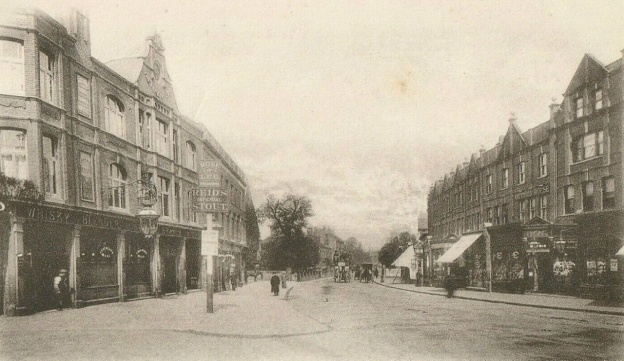
I loved this pub in its recent incarnation. They did fab chicken wings and were very friendly. Here’s hoping it will return.
I ran the Rose of Lee from 2001 to 2004 in fact I left the Rose in the October of 2004 a few weeks after holding my wedding there, I’ve been associated with the pub for quite a few years in terms of work and also as a customer.
Other landlords names before me were Vickie & Steven Hill, Tony Coffey, and there were quite a few others but these people were the most prominent.
When I left the Rose the name was changed to the Dirty South I havnt a clue why.
The new people tried to do the live music thing that I had started for the last year that I ran the pub, but trying to attract a younger audience with some but not a lot of success.
The “ransacked” pub thing happened during the protests for a man killed by the police in North London, it wasn’t really ransacked as such but the windows were all kicked in.
The Rose is currently home to a group of squatters which is really sad to see.
the pub sign is privately owned by I believe a lady down on the west coas,t I did try to track it down and buy it but was met with no reply, interesting fact, at the rear of the pub is the landlords stables that still have (or did when I left the pub) the original floor and horse feed baskets and tie rings mounted to the walls, the Clock at the top of the building is original and made of solid brass (it’s stunning) I did clean it up and get it working and for the time I ran the pub it worked, to wind it I had to get into the loft and wind it by hand with a spanner, the time accuracy was controlled by loading pennies on the the pendulum weight to either speed it up or slow it down.
I did do some research on the rose myself while I was there and was led to believe the pub was build at the rear of three cottages called rose cottages hence the name, how true that is is anyone’s guess.
Thanks so much for your comments Colin, really appreciated – will try and incorporate them in over the next few days. Didn’t realise it was squatters in there – had assumed that the owners had let out the upper floors. Maybe that’s what they’ll do post lock down – it’s what has happened to most of the bigger pubs round here, and a fair number of the smaller ones too. Thanks again.
Hi Paul, I was the Landlord of the Rose of Lee Under the Host Group (Grandmet) from around 1987 to 1990. I setup the Gym while I was there. we had an arrangement with a recording studio, they would send artist to us to promo their latest releases. The original plan was to open a night club, all the plans had been drawn up but at the last moment Cliff Young, MD of the Host Group, came to see us and explained that the Company needed a Sports Pub on its portfolio and the only Pub big enough was the Rose. He tried to persuade us to stay and run it but we declined, we oversaw the Sports Bar conversion before moving to The Village Inn, Tunbridge Wells. Do you know about Mr Norris the ghost!!
Hi Paul, slight revision on the time we were there, it was more like late ’82 to ’85. I was the youngest Licensee in London at the time lol.
Thanks Ron, really appreciated. I’ve added your comments in – tell me more about the ghost!!
The sign is down in Falmouth Cornwall with my sister.
The upstairs of the pub since 2001 has been run as a hostel known as Rose house) first for asylum seekers (that was when I was there) and later for who knows what but it was still a hostel right up until it finally closed down, both the Hostel and the bar/pub were on the same lease.
Let me have your postal address and the Society will send you a copy of my latest: Volume III. Blackheath in Lee Parish and Blackheath in Lewisham Parish. Nearly 600 pages and weighs a ton.
Neil [Rhind]
Phone no deleted by Running Past
Pingback: Lee Court – Art Deco Housing for Young Professionals | Running Past
My grandparents met at this pub. Without it a whole lineage would not be on earth! Sad to see this has closed before I can visit (in the USA)
Hopefully it will re-open in a post COVID world when there is a greater degree of certainty for pubs.
Interesting article. Past there the other day and ended up here. I used to drink in there lunchtimes as an 18 year old apprentice back in 83. Was reroofing properties in nearby Morilo Rd. Very hot summer cold beer, big screened video jukebox ,and a great gang of guys. Pub always seemed very rough and ready but friendly, never got there in the evenings. Labour MP Glenda Jacksons son lost an eye after being glassed in a bar fight so maybe just as well. It look derelict now like a lot of Londons boozers I used to frequent. The remaining ones are souless places and I guess covid will finish a lot of them off. Glad to have be a child of the 60s.
Pingback: The 1878 Lewisham and Lee Floods | Running Past
This pub was run by Alice and Len Dwan in the late 60s early 70s. My Nan and great Nan both worked behind the bar during this period. Alice used to cook huge turkeys, gammon and beef to serve in sandwiches for customers that weee served all week.
My mum had her 21st birthday there in 1969 and my parents had their wedding reception there in 1971. My family used to drinking the snug bar every Sunday evening.
Thanks Natalie – I’ve updated the post with some of that.
I remember it as ‘The Dirty South’ in 2007&8, having played there a few times. On one particularly memorable occasion, a large bass speaker fell from the ceiling and nearly hit me in the head.
A particular highlight was Mick Whitnall from Babyshambles striking up conversation outside with all and sundry. A real staple of the place but clearly under the influence of (at least) alcohol to a greater or lesser extent every time to the point where you couldn’t really understand a word.
Pingback: El Partido – A 1960s Lewisham Music Venue | Running Past
This was my Dad’s watering hole. We lived round the corner one of the first houses in Manor Park from about 1946 to 1968 so it was pretty handy !! He always stopped off On his way home from work and I think popped round later most evenings.He liked a drink but I never saw him drunk.Nor did I ever set food inside as children were not allowed in pubs and by the time I was old enough was more interested in places where young people gathered . The beautiful etched windows prevented any view of the interior and screens inside the doors blocked the view.So it remained a mystery to me!! Sad if it is demolished or left to squatters as it is an iconic building.
Before they were done away with the trams stopped there as it was set back and plenty of space for passengers to wait safely
My late dad, Austin Daly, ran the Rose of Lee in the early 80s. It was emotional to see his name mentioned in the history of the pub as he died in 2018. I have very fond memories of living there after moving back from Ireland, I was still in primary school at the time. It’s only recently that I discovered that Kate Bush played her first gig there in 1977. I’m a huge Kate Bush fan so I was thrilled to hear this!
Definitely wasn’t a landlord called Ron in 1982 as my dad ran the pub then. Austin Daly.
Hi Caroline
Thanks for getting in touch (and a few months back). I had to put Running Past on hold for a while due to other things going on in my life. The dates had been based on comments from you Dad’s successor, Ron Miles. He seemed a little uncertain about the exact dates, so I’ve changed it to 1983. If there is anything you remember from that era or family photos of the pub that you’d be happy to share do get back in touch. Will e mail you as well.
Thanks again for getting in touch – it’s really appreciated.
Paul